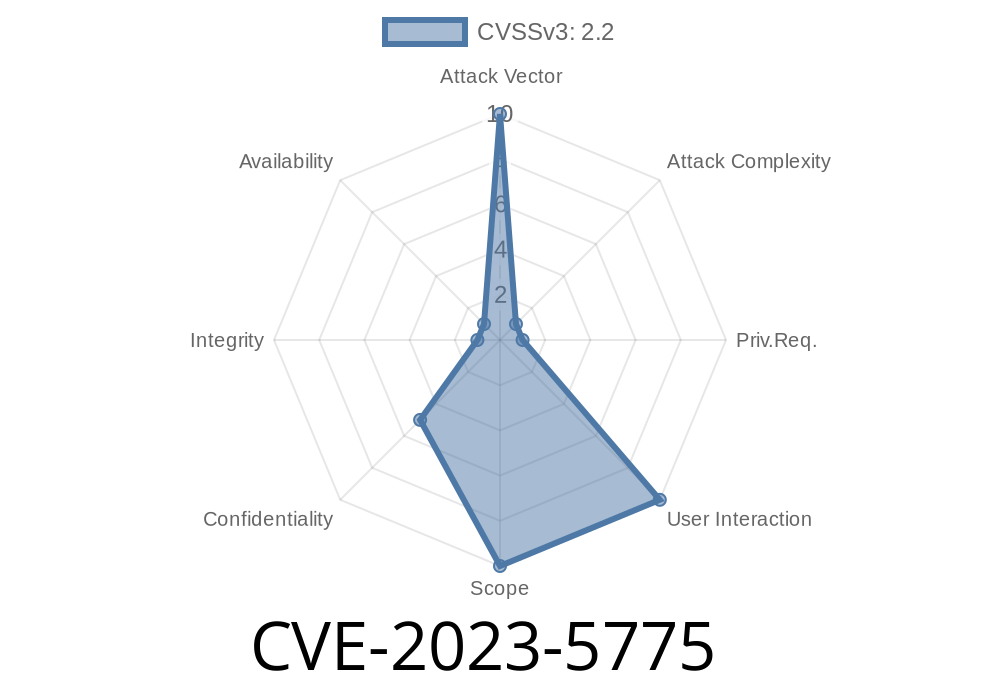BackWPup is an essential plugin for WordPress websites which allows users to schedule and automate backups of their site. However, a recent vulnerability has been discovered in the plugin, namely CVE-2023-5775, affecting all versions of BackWPup up to and including 4..2. This vulnerability is related to the plaintext storage of backup destination passwords, which could potentially give authenticated attackers (with administrator-level access) the ability to retrieve the password, either directly from the UI or from the options table where the password is stored.
In this post, we will dive into the details of this BackWPup WordPress plugin vulnerability, exploring how it can be exploited, and offering suggestions on how to protect your website. Additionally, we'll provide code snippets and links to the original references to help you understand the issue clearly.
Vulnerability Details
The core of the problem in the BackWPup plugin is the improper storage of backup destination passwords. Instead of encrypting or hashing these passwords, they are stored in plaintext, making it fairly straightforward for attackers to access them. Specifically, the vulnerability arises from two areas:
1. The password input field in the UI: The password can be viewed directly by inspecting the source code of the page while accessing the configuration settings of the BackWPup plugin. In the source code, a password input field with the type set to "text" is present, making it possible for anyone with administrator-level access to view the backup destination password.
<!-- Vulnerable snippet from the BackWPup plugin -->
<input type="text" name="backwpup_destination_password" value="PASSWORD_HERE">
2. The options table: The backup destination password is stored in the WordPress wp_options table, which can be accessed by running a simple SQL query. An attacker with access to the table can easily find the password.
SELECT option_value FROM wp_options WHERE option_name = '_backwpup_plugin_settings';
Exploit Scenarios
For this vulnerability to be exploited, an attacker needs to have administrator-level access to the WordPress website. While this requires compromising the primary security layer of your website, it's not an uncommon occurrence. For example, a rogue user with administrator privileges, a disgruntled employee, or an inexperienced user may accidentally leak sensitive information.
Once the attacker has gained access to the website, they can steal the backup destination password, leading to potential unauthorized access to backups or other security breaches.
Protection Measures
To protect your website from this vulnerability, the first and most important step is to update the BackWPup plugin to the latest version (4.1.3 at the time of writing). The developers have released a patch for this vulnerability that securely stores the backup destination password.
Secondly, ensure that only trusted users have administrator-level access to your WordPress website, and follow best practices for account security, such as strong, unique passwords, and enabling two-factor authentication (2FA).
Original References & Further Reading
1. CVE-2023-5775 Vulnerability Information: https://cve.mitre.org/cgi-bin/cvename.cgi?name=CVE-2023-5775
2. BackWPup WordPress Plugin: https://wordpress.org/plugins/backwpup/
3. Patched BackWPup Release: https://github.com/inpsyde/backwpup/releases/tag/4.1.3
4. WordPress Security Best Practices: https://www.wordfence.com/learn/wordpress-security/
Conclusion
The plaintext storage of backup destination passwords in the BackWPup WordPress plugin is a dangerous vulnerability that all website administrators should be aware of. By following the protection measures outlined above and keeping your plugins up to date, you can reduce the risk of potential security breaches related to CVE-2023-5775. Stay vigilant and secure on the web!
Timeline
Published on: 02/26/2024 16:27:49 UTC
Last modified on: 02/26/2024 16:32:25 UTC
